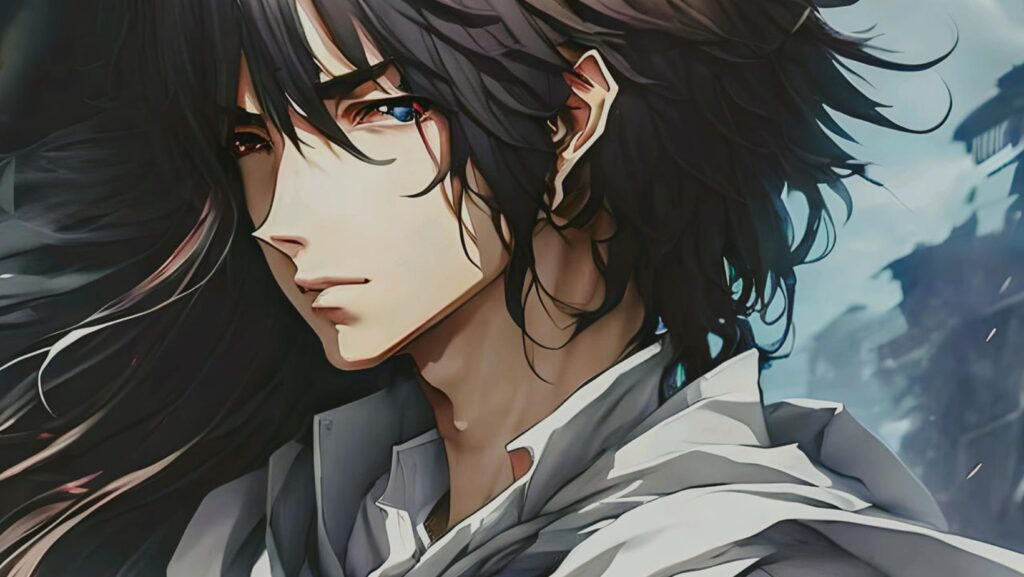In the vibrant world of anime, characters are the heartbeat that drives the game story’s appeal, with each one crafted to resonate with audiences in unique ways. Among these, the archetype of the “anime boy” holds a special place, capturing hearts with their complex personalities and compelling backstories. These characters often embody a blend of strength and vulnerability, navigating their worlds with a mixture of courage and personal and business growth that makes them relatable to viewers.
Plot and Setting
The plot of an anime often serves as a captivating backdrop that enables boy characters to showcase their complexities and growth. Set in diverse worlds, from fantastical realms to stark, realistic environments, cyber defense, the settings in anime are instrumental in defining the characters’ journeys and the challenges they encounter.
Key Characters
 In the series, key characters are typically young males whose development is central to the narrative. These characters, through their interactions and personal struggles, often illuminate the overarching themes of the anime. For instance, a protagonist might navigate through the trials of magical academia while dealing with the realities of coming-of-age, thereby reflecting the internal and external battles that shape the character’s identity and values. Through their resilience and adaptability, these characters engage the audience, fostering a deep connection and investment in their stories.
In the series, key characters are typically young males whose development is central to the narrative. These characters, through their interactions and personal struggles, often illuminate the overarching themes of the anime. For instance, a protagonist might navigate through the trials of magical academia while dealing with the realities of coming-of-age, thereby reflecting the internal and external battles that shape the character’s identity and values. Through their resilience and adaptability, these characters engage the audience, fostering a deep connection and investment in their stories.
Art and Animation Style
The art and animation style of anime plays a crucial role in bringing anime boys to life, emphasizing their personalities and emotional depth. Through distinctive visuals and innovative animation techniques, these characters not only appeal visually but also enhance storytelling.
Visuals and Character Design
 Anime distinguishes itself with unique visual styles that effectively mirror the complexities of anime boys. Character design is pivotal, focusing on intricate details such as eye shape, hair texture, and expressive features that signify personality traits and emotional states. For instance, large, detailed eyes often convey a wide range of emotions, helping viewers connect with the characters on a deeper level. Moreover, the design often incorporates symbolic colors and thematic elements that align with the character’s narrative arcs, such as darker hues to indicate a troubled past or vibrant tones to symbolize hope and transformation.
Anime distinguishes itself with unique visual styles that effectively mirror the complexities of anime boys. Character design is pivotal, focusing on intricate details such as eye shape, hair texture, and expressive features that signify personality traits and emotional states. For instance, large, detailed eyes often convey a wide range of emotions, helping viewers connect with the characters on a deeper level. Moreover, the design often incorporates symbolic colors and thematic elements that align with the character’s narrative arcs, such as darker hues to indicate a troubled past or vibrant tones to symbolize hope and transformation.
Animation Techniques
 Animation techniques in anime evolve to better portray the dynamic nature of these characters. Techniques like sakuga, where key frames are lavishly detailed to showcase major scenes, highlight moments of intense action or emotional significance, thus enriching the viewer’s experience. Additionally, the use of CGI has grown, allowing for smoother transitions and more complex scenes that traditional methods might limit. This integration of traditional and modern techniques ensures that anime remains visually engaging and that characters’ movements and expressions are fluid, capturing subtle nuances that contribute to the narrative’s depth.
Animation techniques in anime evolve to better portray the dynamic nature of these characters. Techniques like sakuga, where key frames are lavishly detailed to showcase major scenes, highlight moments of intense action or emotional significance, thus enriching the viewer’s experience. Additionally, the use of CGI has grown, allowing for smoother transitions and more complex scenes that traditional methods might limit. This integration of traditional and modern techniques ensures that anime remains visually engaging and that characters’ movements and expressions are fluid, capturing subtle nuances that contribute to the narrative’s depth.
Themes and Messages
Exploration of Core Themes
 Anime featuring boys often tackles themes of identity, resilience, and friendship. These narratives touch on identity struggles, as characters grapple with who they are and what they must become. For example, series like “My Hero Academia” explore heroism intertwined with personal growth, where the protagonist, a young boy, strives to overcome his limitations amidst a world full of superpowers. Resilience emerges through the challenges these boys face, which often include battles against overwhelming odds or internal conflicts that test their spirit and determination. The theme of friendship stands central, stressing its importance in overcoming life’s hurdles and achieving personal goals. Popular anime like “Naruto” showcase deep bonds between characters, underscoring how friendships can drive individuals to surpass their limits and grow stronger together.
Anime featuring boys often tackles themes of identity, resilience, and friendship. These narratives touch on identity struggles, as characters grapple with who they are and what they must become. For example, series like “My Hero Academia” explore heroism intertwined with personal growth, where the protagonist, a young boy, strives to overcome his limitations amidst a world full of superpowers. Resilience emerges through the challenges these boys face, which often include battles against overwhelming odds or internal conflicts that test their spirit and determination. The theme of friendship stands central, stressing its importance in overcoming life’s hurdles and achieving personal goals. Popular anime like “Naruto” showcase deep bonds between characters, underscoring how friendships can drive individuals to surpass their limits and grow stronger together.
Impact and Relevance
The impact of these themes is profound, resonating with a diverse audience worldwide. They make anime relatable and aspirational, often providing viewers, especially young ones, with a sense of hope and motivation. These stories underscore the relevance of perseverance, moral integrity, and the importance of community and support systems. They not only entertain but also offer valuable life lessons about the importance of facing and overcoming adversity, fostering a sense of connection with audiences. This cultural relevance can be seen as anime’s popularity continues to soar globally, influencing not just entertainment but also discussions around personal development and societal values.



